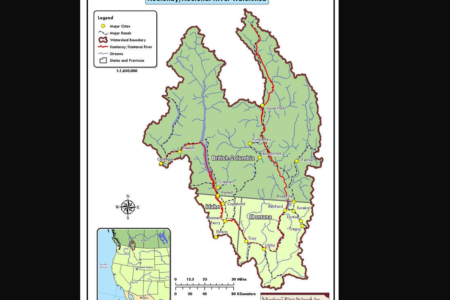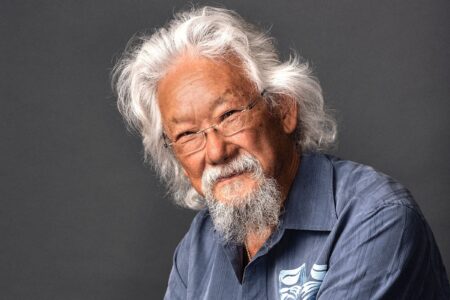Gondola Dreaming - Pre Feasibility Determines Potential Gondola Location
Imagine waking up early on a sunny winter’s morning, a fresh 15 centimetres of Kootenay powder on the ground. A perfect day to head up to Red and make some turns. Putting your boots on in the comfort and warmth of your house and strolling either down, up, or across the hill to Columbia Avenue you breeze right past your snow-covered car and plowed-in driveway. If it’s snowy enough and you live in upper Rossland maybe you put your skis on at your door and schuss down Spokane Avenue, popping off your skis at the corner of First and Spokane and put them in a funky and artistic wrought-iron ski rack designed by one of the many local artisans.
Skis stored, you step into the new cafe/restaurant / ski shop where once sat the vacant lot next to Red Mountain furnishings. You pick up your tofu breakfast wrap [editor’s note: yuck] and chai latte. Saying hello to all the familiar faces and friends also there picking up a breakfast snack, fixing their bindings on the community tool rack or just enjoying the early morning air at one of the outside cafe tables in front of the outdoor fireplace, you find your ski buddies for the day and make your way across the street.
Crossing Spokane Street and walking past the post and beam, glass enclosed bus terminal you follow the meandering paving brick pathway through Pioneer Park and casually walk into an open-air cabriolet-style stand up gondola. Speeding up as it leaves the station and makes it way towards Red Mountain the gondola glides up over the new Star Gulch trail and you wave to friends who didn’t get up as early as you. You continue to soar across the arena parking lot, over the public works yard, across the highway and through the trees along the shoulder of Red Mountain.
Breezing through the forest at seven meters per second, chatter grows among your gondola mates as you peer out over the edge, guessing what tracks are from what animals, estimating just how much new snow did fall and chatting about which lines to hit first when you arrive at the top. Mid way along your journey, the gondola slows to a near-halt as the next gondola cars arrive at the load/unload station, creating a brief interlude of peace and quiet. Enjoying the brief respite, in which you can hear each snowflake latching onto the fibres of your wool hat as you catch a few snowflakes on your tongue, you revel in the fact that you do indeed live in a mountain paradise.
Speeding up again, you crest the shoulder of Red Mountain and descend into the heart of a pedestrian village tucked up against the base of the ski area. Eleven minutes after boarding you hop out, walk along a short, brick-paved walkway, past the doors of west coast style condominiums straight to the base of the Red mountain chair where you pop your skis on and head up the lift, never having had to get in or out of a car, not having to have had to shovel out your driveway, and happy you’re not contributing pollutants and emissions to the atmosphere.
Sound like a farfetched scenario? The idea of a gondola in Rossland has been around for thirty years already. Now, after spending approximately $30,000 on a gondola pre-feasibility study, Rossland has inched ever so slightly towards the realization of that dream.
Paul Matthews of Ecosign Mountain Resort Planners presented the results and findings of the pre-feasibility study to Rossland council this past Monday night. For insight into just what the study entailed, please read the Telegraph’s earlier article “Study of a Study”.
The study itself focused on five main areas:
1. Existing and future land uses at Red Mountain Resort (RMR) and in the Rossland Downtown and Midtown areas.
2. Opportunities for improvements to the existing skiing, hiking and cycling trails between RMR and the City. Other all season uses of the lift were also considered.
3. Preliminary technical feasibility of the connection including terminal siting options, road crossings, tower locations, capacity and system configurations, equipment selection and geo-technical implications.
4. Economic considerations including capital and operating costs, potential revenue sources. Economic benefits
5. Land ownership and regulatory approvals
While it was presumed before the study took place that if there were to be a gondola built in Rossland, running from the city works yard on Third Avenue, to the top of Red Mountain, that alignment was discarded fairly quickly after study began.
For the gondola to be feasible it would need to connect two high density development nodes to create the demand necessary to warrant the gondola. Running the line from the works yard to the top of Red would not work as the terrain on Red is generally over 75% grade and by the traditional book of ski area planning not skiable by 90% of the skiing population. This would leave tourists and beginner skiers with no way of getting down to the base area or accessing the rest of the ski area.
Out of the report three, conceptual developments were produced. Option C would run in a two-stage setup from the city works yard up to the bottom of Sally’s Alley with a mid-station at this location, and then down into the Red Mountain base area near the bottom of the Red Mountain chair. Option B would run from the arena parking lot along the shoulder of Red mountain below Dales Trail, to the same end terminal in one continuous stage. Option A2, which would be the most feasible and most likely option if the gondola were to be constructed, would run from a bottom terminal located in Pioneer Park on Spokane Street running up the ravine beside Esling Park Lodge, over the arena parking lot, through the city works yard along the shoulder of Red to the same end terminal as the previous two options.
“We were quite happy when we discovered that alignment would be possible,” explained Paul Matthews before council.
The best fit for a lift system to run on this alignment, as outlined in the study, would be a cabriolet-style pulse gondola. Hailed for their low operating costs such pulse gondolas have been used for similar projects successfully in a number of other locations as people movers, including Mont Tremblant, Snowmass Colorado and Panorama near Invermere.
“Understand that this is not some prototypical idea. This concept has been done in may locations successfully around the world for many years. It’s a proven science,” explained Matthews.
Pulse gondolas come with the benefits of fixed grip technology keeping operating and capital costs lower than detachable gondolas. Pulse gondolas can also achieve higher line speeds moving at up to seven meters per second compared with six meters per second on detachable lifts. For comparison fixed grip chairlifts such as the variety running up Red have a maximum speed of around 2.4 meters per second. What is given up with pulse technology is carrying capacity, particularly over longer distances.
In order to achieve the high line speeds with a fixed grip technology the gondolas are set up on the line in a 4x3x8 setup. This mean four groups of three gondolas grouped tightly together spaced evenly on the line each carrying eight passengers. The entire line would slow down to 0.1 meters per second as each group of gondolas come through the load station to make loading easier without detachable grips. As the gondolas leave the station they would speed up to seven meters per second. With four groups of cabins you would then slow down again as you were halfway along the line for the next group of gondolas to load, speeding up again to the unload terminal. This setup on the Rossland alignment would allow for an eleven minute ride time from Pioneer Park to the Red base area.
The Rossland/Red gondola would run just short of three kilometres and at full capacity would be able to carry up to 334 people per hour, which would more than accommodate the demand as studied by Ecosign.
A pulse gondola setup on the Pioneer Park alignment is estimated to come with a $7.4 million capital cost price tag, significantly cheaper than the $10.8 million for a detachable eight seater gondola on the same line including 10% contingencies for cost overruns.
“These are the types of projects that governments and other groups like to find money for. For example you might get 60% from governments, another chunk of money from a resort association or home owner’s tax or something to that effect and then you’ve just got to come up with a way to cover the operating costs,” explained Matthews
The mantra behind people mover systems such as the proposed pulse pulse gondola system is “Fast, frequent, and free,” to make them work properly. This would mean a free system to the customer ensuring it gets used. The operating costs of the pulse gondola system are relatively low, and actually achieve significantly lower operating costs than operating a bus system. It is estimated that such a pulse gondola in Rossland would cost approximately $56/hour to operate. Busses typically run at closer to $125 per hour to operate.
Moving forward with the project, it is important to understand that this was a pre-feasibility study and the next step would be a full feasibility study incorporating a much broader scope of how such a system would be implemented.
“This study tells you where the system would go and how much the system would cost. A full feasibility study would work on how you would pay for it,” explained Matthews.
Realistically, such a project is at the least several years away. One of the main goals of undertaking the pre-feasibility study was to determine the alignment of such a gondola so that future city planning can be undertaken to preserve the alignment. Don Thompson of Red Mountain Ventures described the intent of the study in an understandable way.
“It’s like the old rail grade that used to run through Rossland. Had such a study been done on transportation in Rossland a number of years ago we might have identified the rail grade as an excellent transportation route through town and planned appropriately to maintain that route.”
While no gondola is imminent, the study available on city council’s website provides us all a little better context to dream about a potential future and the framework for the planning required to maintain the possibility of such a project.

























